Building a winning eCommerce merchandising strategy might seem like a daunting task, but with a little know-how, you can get customers rushing through your digital doors.
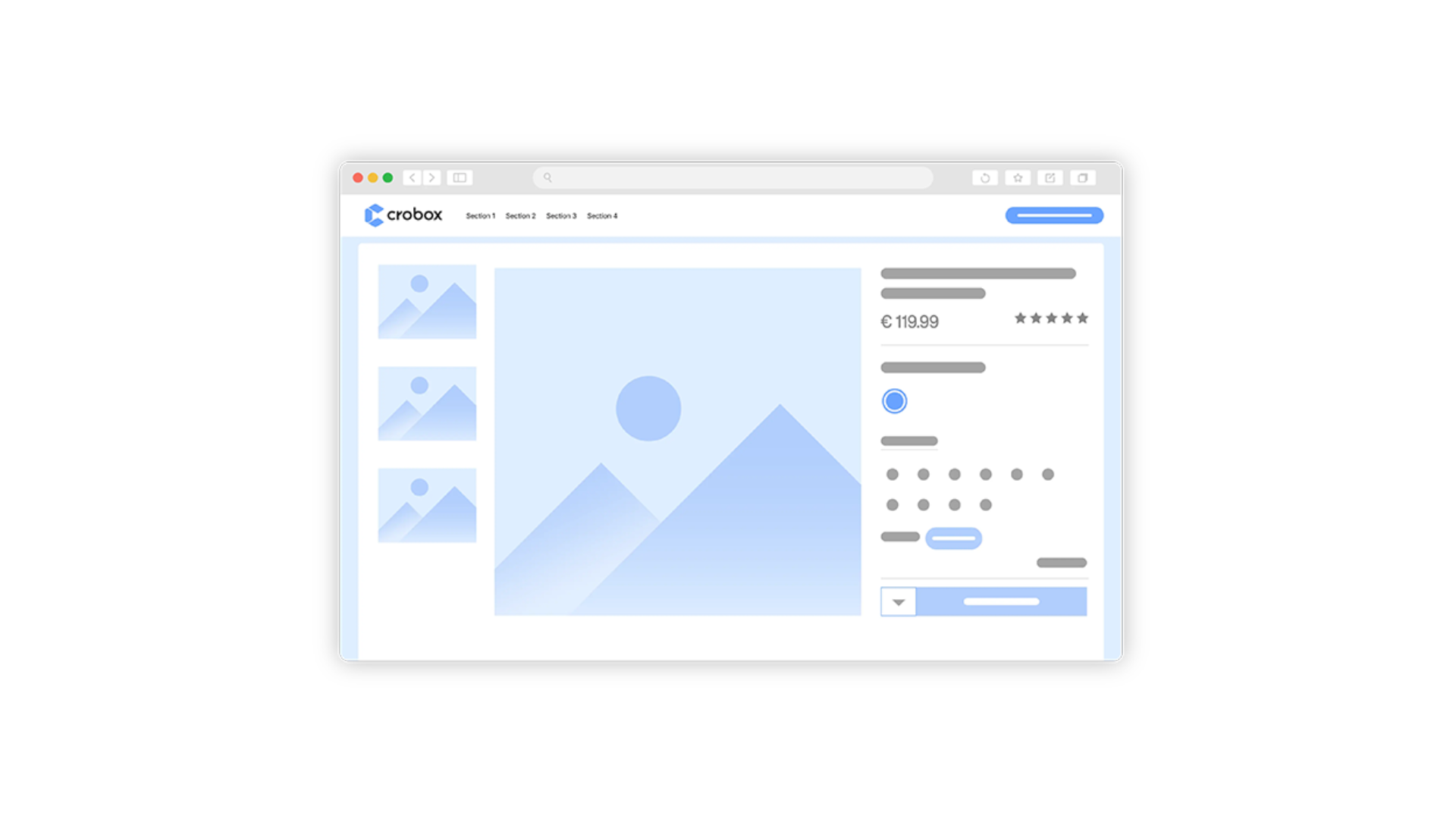
Building a winning eCommerce merchandising strategy might seem like a daunting task, but with a little know-how, you can get customers rushing through your digital doors.
From savvy product placement to killer promotional tactics, we'll show you how to make your online store stand out in a sea of digital competition.
Digital merchandising refers to the display of products on a website to increase its visibility, conversion rates, and sales. It includes showing specific and relevant products to the right audience depending on where they are in their buying journey.
For instance, a fashion and lifestyle blog can leverage eCommerce merchandising strategies by showing products that are relevant to their readers' interests. The brand can use recommendation tools to suggest related or complementary products (like accessories to go with a dress or shoes to match a handbag) to increase their average order value (AOV) and encourage additional purchases.
When customers are shown the products they’re looking for, they’re more likely to make a purchase. It also boosts the AOV and ensures shoppers return, time and time again. However, it’s essential to have a documented eCommerce merchandising strategy to keep track of your merchandising goals – these can include:
Consider the following website as a prime example. From high-quality pictures and organized categories to detailed product reviews and descriptions, it’s a great representation of the tactics needed to boost sales.
With a few tips and tricks, you can get ahead of your competitors. Here are 7 essential steps to take when building a winning eCommerce merchandising strategy.
Start your strategy by focusing on your homepage – where your brand’s credibility is immediately established. When your site is built to facilitate user experience with a clean UI/UX design, personalized CTAs, and headlines, your chances of conversions dramatically increase.
You can use AI personalization tools such as Adobe Target and Optimizely to cater to your customer’s interests and enhance your website’s user-friendliness. These tools use machine learning algorithms to analyze customer data such as past purchases, and browsing behavior to provide personalized product recommendations and content.
To create a website that is both visually pleasing and user-friendly there are several elements to consider. These include logos, visuals, color themes, and value propositions.
You can attract and retain customers by carefully selecting and designing these elements for your brand. A clear value proposition that highlights the benefits of a product type or service will also help customers understand why they should choose your brand over others.
Adidas is an excellent example of an eCommerce store that utilizes a clean UI/UX design, content personalization, and an overall user experience to drive more sales.
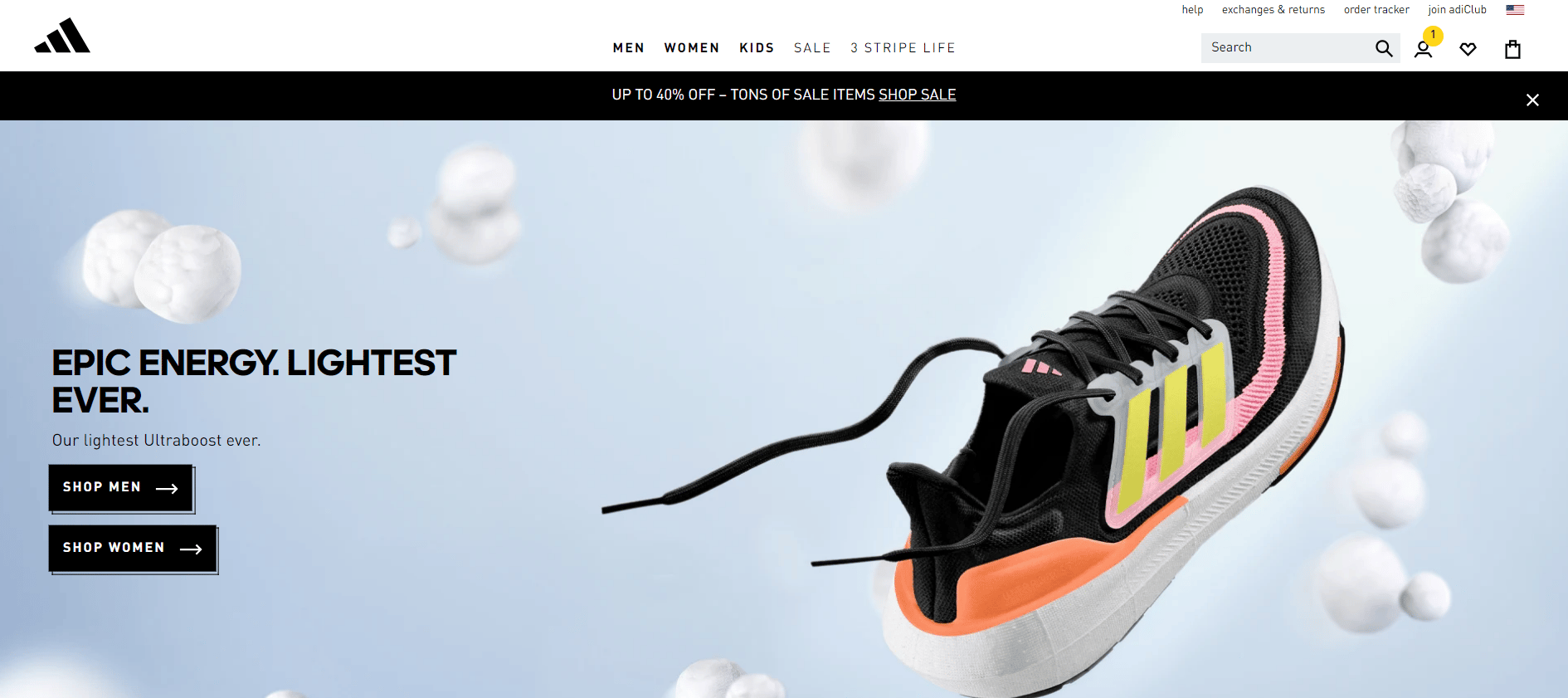
The Adidas homepage features a minimalist and clean design that’s easy on the eyes and not overwhelming for users. Plus, their product visuals and videos are of high quality. This is especially important when it comes to athletic wear and sneakers, where fit and movement are key factors in making a purchase.
Overall, it's a great example of how personalization can make a big difference in the user shopping experience and increase your sales. Remember that your eCommerce store’s homepage is like a virtual storefront, and making a good first impression is crucial.
Advanced AI tools can now rank, sort, and categorize products in your collections through multi-parameter sorting methods. The collections can also be optimized using real-time data to ensure the customers find the right products in your display. Here are 3 things to keep in mind with collection-based merchandising:
High-quality images showcase your products more effectively. Customers want to see what they're buying, and the images you choose can make or break their purchase. Your videos and images should be clear and well-lit and show your products from multiple angles to give shoppers a complete understanding of what they're getting.
When customers are browsing through a lot of options, it can be overwhelming. By ranking products based on factors like popularity or customer ratings, you will make it easier for customers to find what they're looking for.
An example of this is Amazon's product ranking system. Amazon ranks products based on factors like best-selling products, customer ratings, and sales history.
For instance, if a customer is looking for a new book to read, they can browse through the best-seller list or search for books with the highest ratings. This makes it easier for customers to find books that are well-liked by other readers and can lead to more confident purchasing decisions and customer experience.
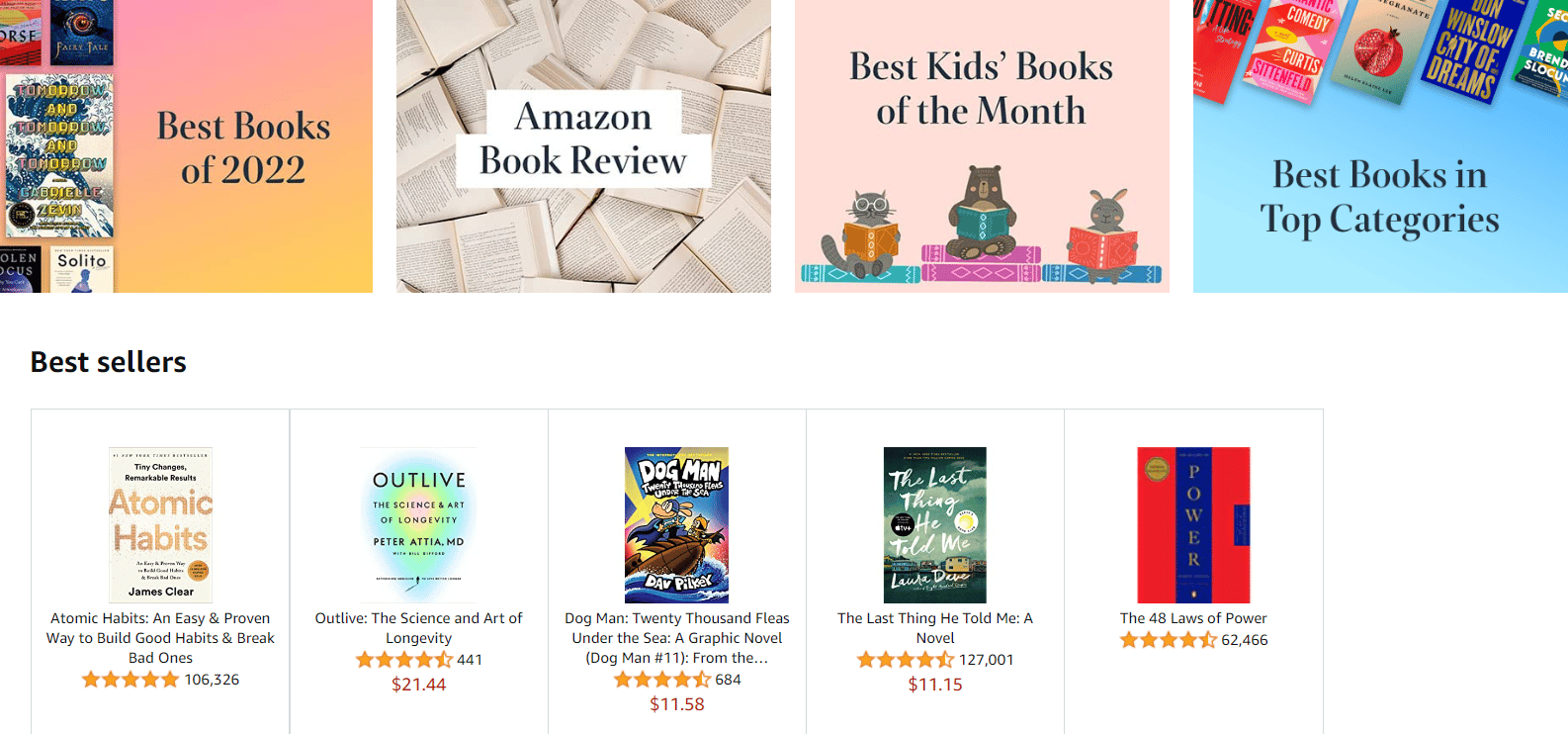
Shoppers don't want to scroll through pages and pages of products to find what they need. They use high-quality images that show their products from multiple angles to help customers clearly visualize the item they're interested in. ASOS also offers product rankings based on factors like popularity and search filter options to help customers find the products they need.
Our favorite example of this is ASOS, a popular fashion retailer that offers a wide range of clothing and accessories.
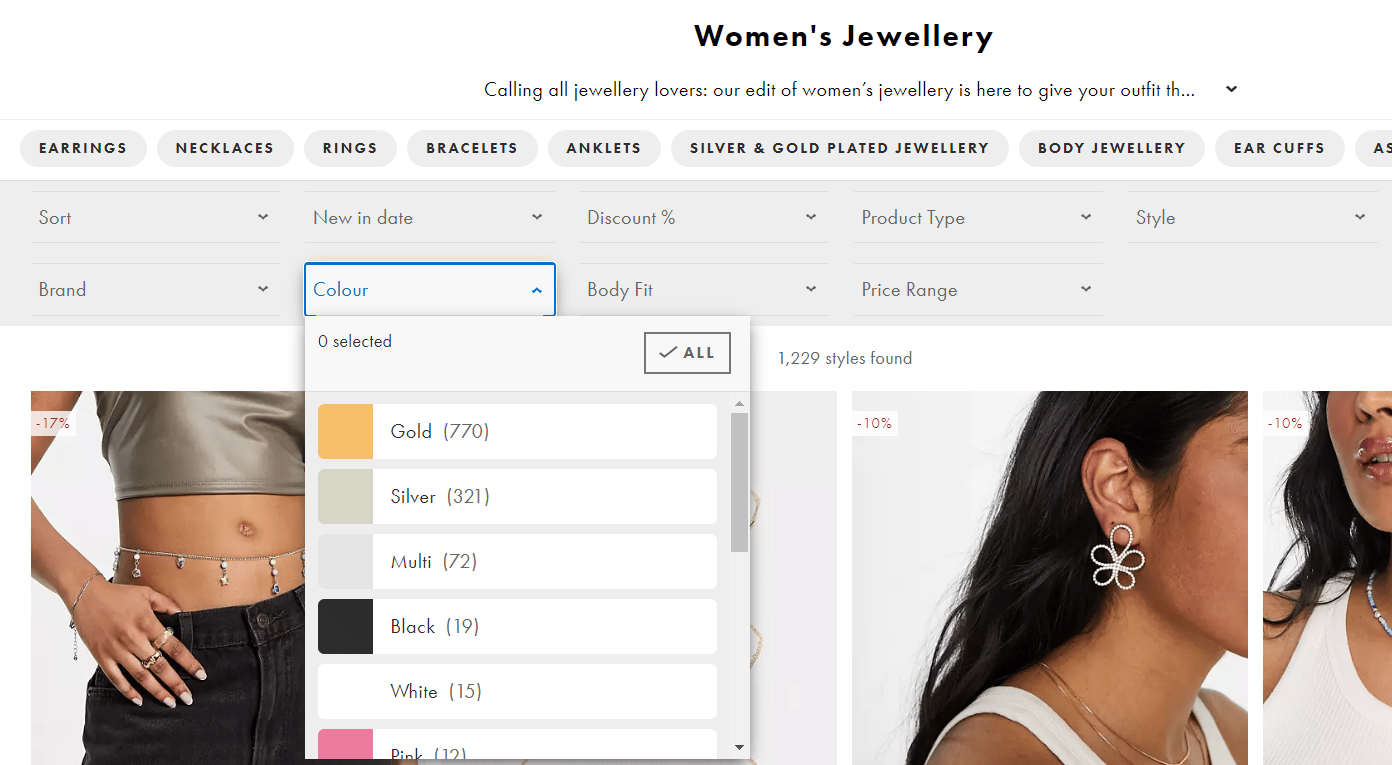
They use high-quality images that show their products from multiple angles to help customers clearly visualize the item they're interested in. ASOS also offers product rankings based on factors like popularity and search filter options to help customers find the products they need.
These methods help customers narrow down their search for a better online shopping experience and more sales for your company.
An optimized PDP is important to convert potential customers. Each PDP should cater to a particular target audience, market, or brand. The following PDP elements should be considered when building your eCommerce merchandising strategy:
Our favorite example of a well-designed PDP is ShopSolarKit’s. They’ve covered all of the key elements seamlessly.
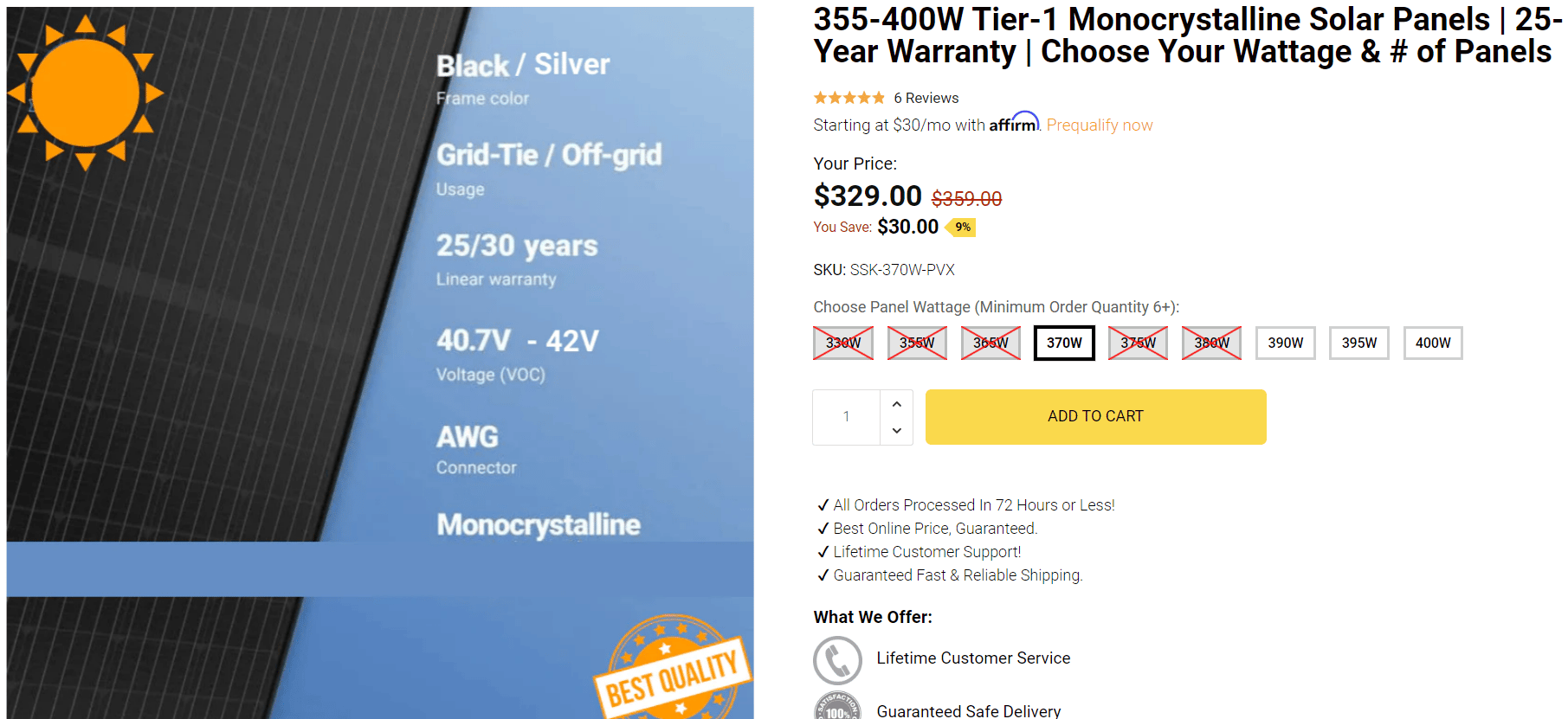
They've added buttons throughout the page to make it super easy to take action. They have a big "Shop Now" button at the top of the page and an "Add to Cart" button next to each product option.
When it comes to the product itself, they offer a range of options for customers to choose from (including wattage, panel type, battery options, and other features), so customers have the freedom to customize their solar kit to fit their specific needs.
Similarly, look at how MedicalAlertBuyersGuide incorporates this into their blog. MedicalAlertBuyerGuide offers reviews and information about various medical alert systems. Their website boasts well-crafted PDPs that include reviews, detailed product descriptions, and clear calls-to-action (CTAs) that encourage visitors to make a purchase.
Consider the PDP below:
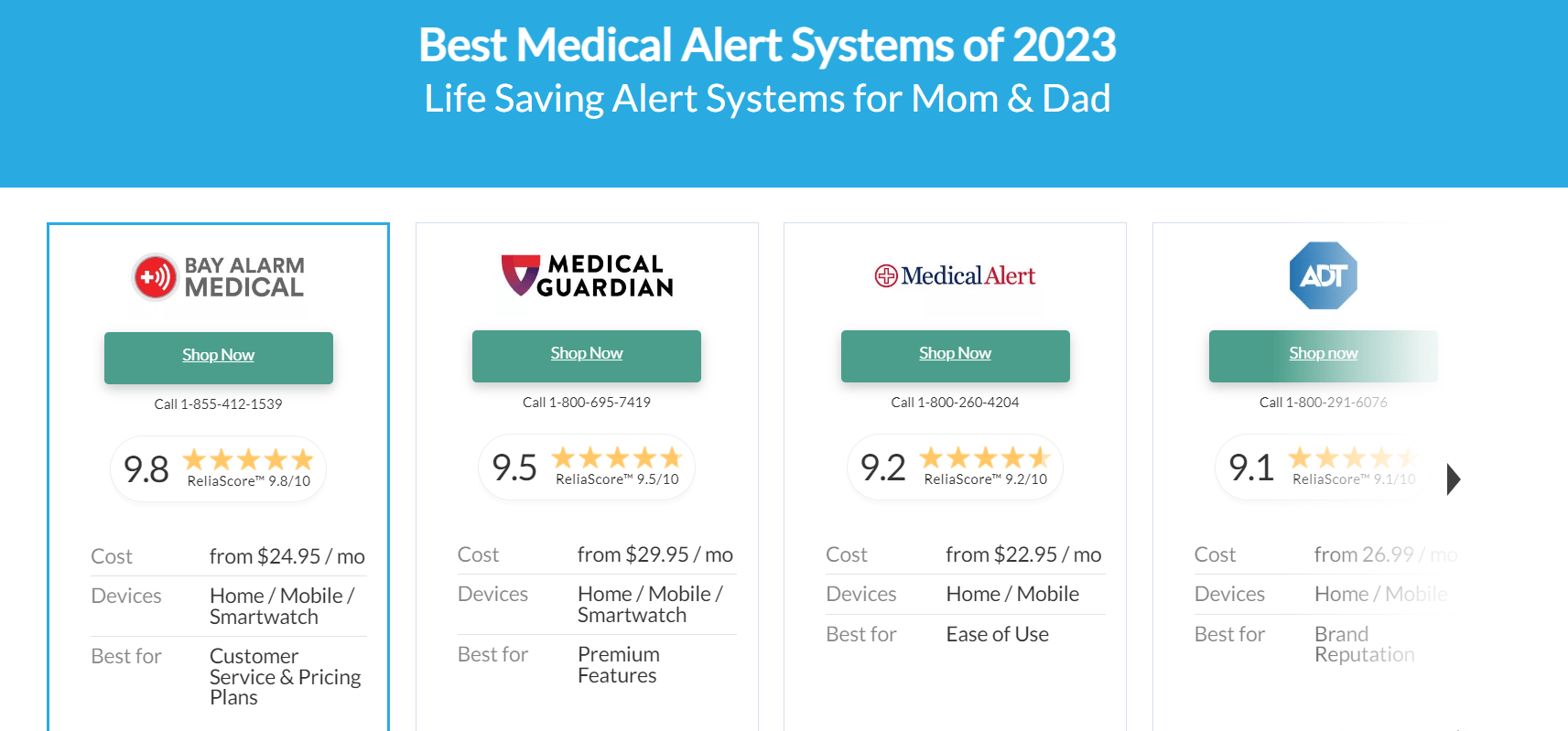
The page includes a prominent "Shop Now" button, as well as a detailed product description that outlines the features of the system. Additionally, customer reviews and ratings are prominently displayed on the page to help visitors make more informed buying decisions.
Remember that an optimized PDP is not a one-size-fits-all solution. So, consider your target audience and brand. Each product page should be tailored to meet the needs and preferences of your potential customers.
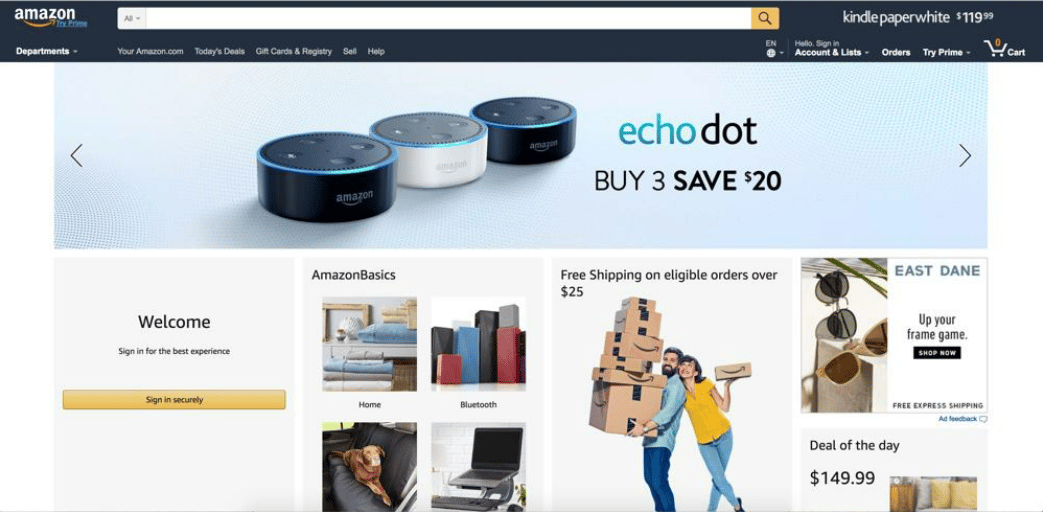
Onsite promotional merchandising involves strategically placing coupons, special offers, and promotions on specific products and collections. Similarly, other popular eCommerce trends include Google ads, email marketing, giveaways, and social media marketing campaigns to attract prospects.
More than 84% of customers tend to see a product’s review and ratings across Google and social media channels like Facebook and Instagram before they make a purchase. Putting the reviews of satisfied customers on your website is a great way to attract potential customers.
Here are some ways promotional merchandising has been used successfully to achieve these goals:
One of the most effective ways to promote products on your website is through onsite promotional merchandising. For example, you can strategically place coupons and special offers on specific product lines and collections to attract customers.
One successful example of this is Amazon's "Deal of the Day" promotion, which features a highly discounted range of products for a limited time. By prominently displaying these deals on its homepage, Amazon can attract prospective customers and boost sales.
You can use targeted keywords and demographics to reach customers who actively search for products similar to yours. For example, if you sell running shoes, you can target customers who are searching for "running shoes" on Google.
One successful example of this is Nike's Google ad campaign, which uses targeted keywords and demographics to promote its products to the right customers.
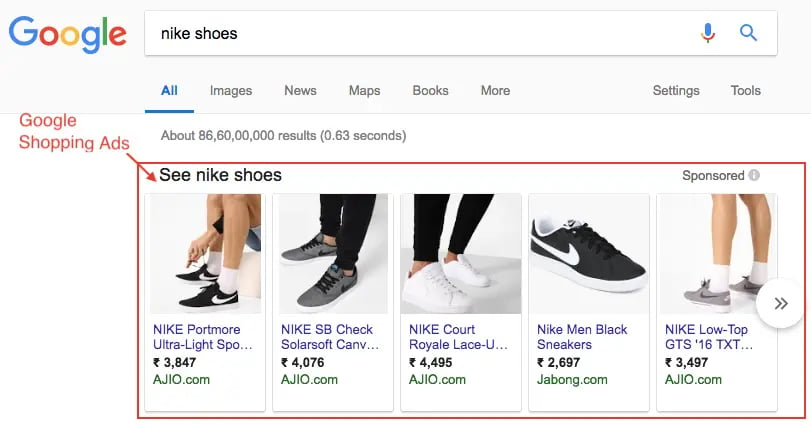
Send targeted emails to your subscribers to keep them informed about new products, special offers, and promotions. For example, if you sell clothing, you can email your subscribers promoting your latest collection.
Our favorite example of this is DressForm’s email marketing campaign, where they send emails to their subscribers promoting their latest collection of dress forms and mannequins and offer a discount to encourage them to make a purchase.

Leveraging inventory optimization in your strategy is not only seen to reduce business costs but also boost sales and revenue. Balancing marketing KPIs with retail goals and inventory optimization is the key to a business's success. The following are the key areas that are optimized to get the maximum output:
Here are 2 ways in which inventory optimization will help you improve your bottom line:
Optimizing inventory levels and demand forecasting ensures that you have the right amount of stock on hand to meet changing customer demand. This way, you will avoid running out of stock, and where you can lose sales you otherwise would have converted if you had ample supply.
At the same time, you should avoid overstocking, which ties up capital investment. Amazon utilizes advanced algorithms and predictive analytics to optimize its inventory levels and demand forecasting. This way, they can ensure that they always have the right amount of stock on hand to meet customer demand.
Optimizing your product sorting and inventory storage will improve your stock margins. You can do this by promoting high-margin products and optimizing inventory storage to reduce wastage and damage.
For instance, Apple uses this strategy to its advantage. They employ product sorting and inventory storage optimization to make sure that their high-margin products like iPhones and iPads are prominently displayed in their stores. This helps them increase profitability by selling more of their high-margin products.
Use advanced tools and software to gather, evaluate, and optimize eCommerce data, including merchandising, sorting, and inventory. With continuous data optimization, your store will get a competitive edge compared to other stores in your niche. This data can be used to track performance for:
For instance, with the help of ETL pipelines, you can use tools like Google Analytics, Adobe Analytics, and Kissmetrics to track website traffic, buying habits, and product performance (including how customers interact with your website, which pages they visit, and how long they spend on each page.)
You can use the information gathered to fine-tune your website's design and layout and ultimately improve the shopping journey for your users. If you're not sure how to use these tools, you can ask a software developer to help you implement and use them effectively.
Similarly, you can use data from marketing campaigns to evaluate their effectiveness and adjust your strategy accordingly. For example, by tracking important business metrics like the performance of email marketing campaigns, you can determine which campaigns generate the most sales and adjust their content and frequency accordingly.
Around 38% of Amazon's revenue is generated by personalized product recommendation tools. While the customers are at the checkout page, these tools show products that are better, relevant, or closely related to the products in the user’s cart. This strategy helps customers find the right products with minimum effort while benefiting the retailers with more conversions.
In eCommerce, product recommendation tools are a powerful resource for upselling and cross-selling. Upselling involves proposing a premium or higher-end version of the product the customer is interested in, while cross-selling suggests related or complementary products.
One industry example of how product recommendation tools support upselling and cross-selling is Vivion, an online store that sells natural ingredients. This product recommendation tool uses machine learning algorithms to analyze the customer's behavior and preferences and then displays products that are most likely to interest them.
The image below shows an example of Vivion’s product page with the “You may also like” section highlighted:
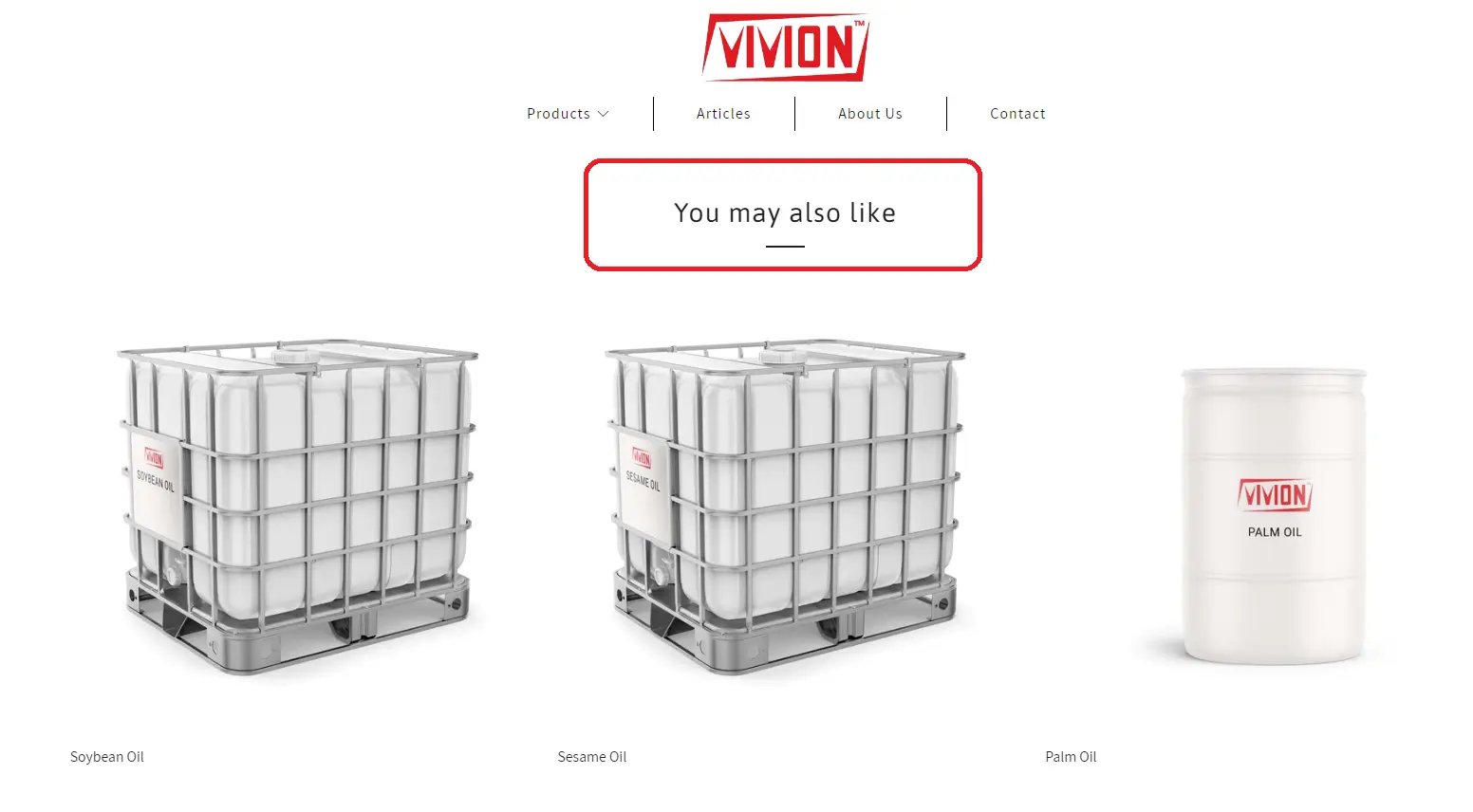
The product recommendation tool displays a selection of similar products (sesame and palm oil) that the customer may be interested in. This way, the tool can help to increase the average order value by encouraging customers to purchase related or complementary products.
Construct your strategy – and stand out from the crowd – with these crucial insights and actionable tips:
As eCommerce grows, omnichannel retailers need to stay on top of the most effective merchandising tactics. By implementing a comprehensive strategy in this way, you can provide your shoppers with a greater user experience to help them find what they’re looking for, and even some things they weren’t.